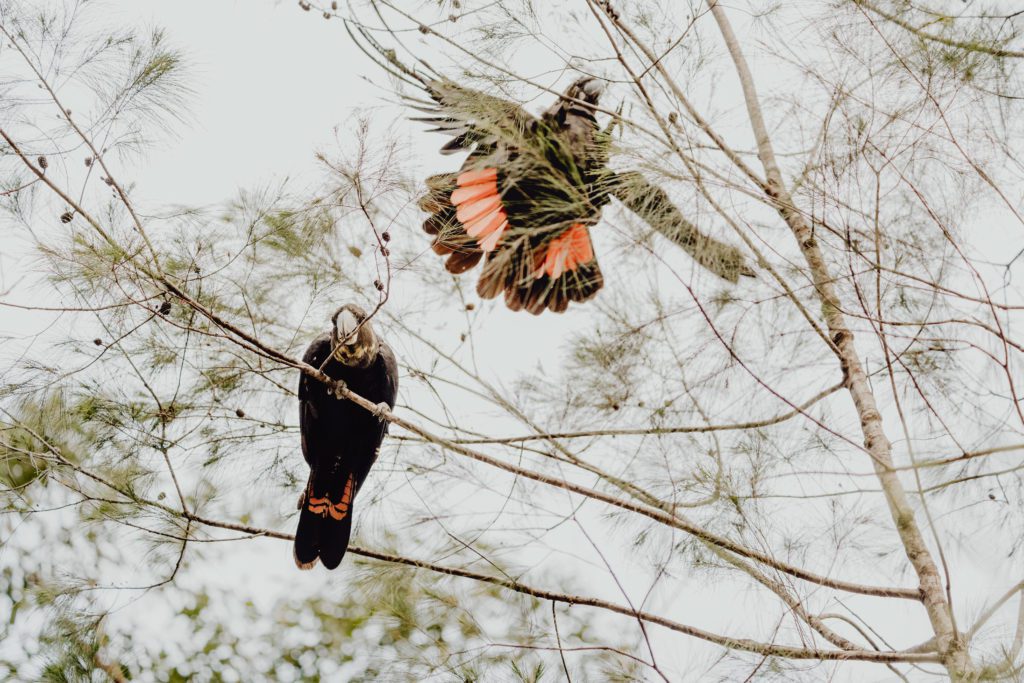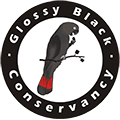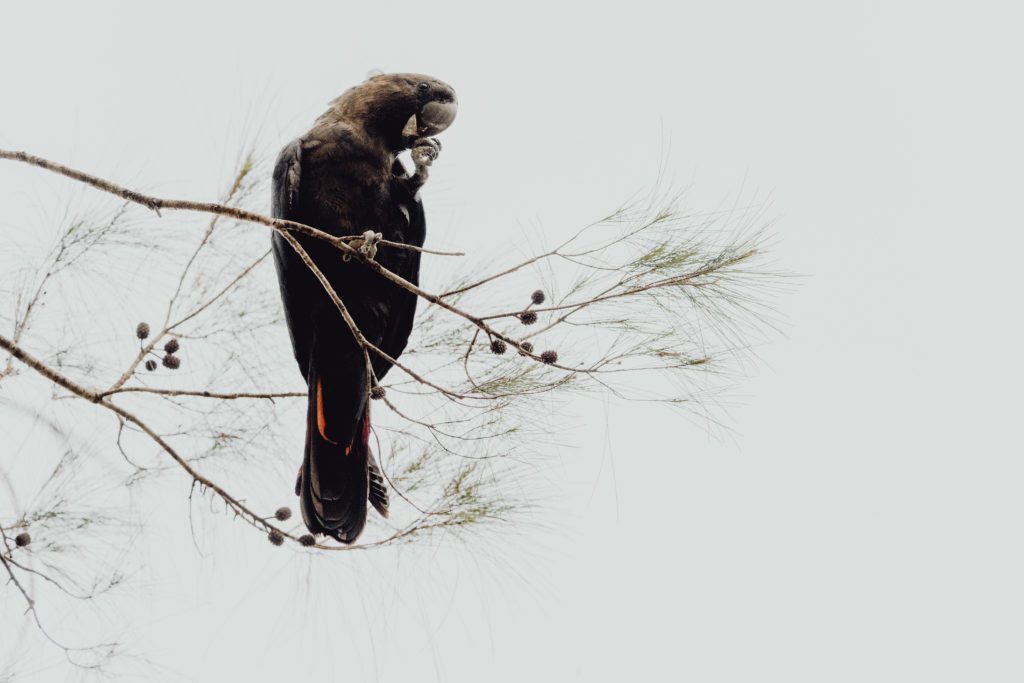More than 80 people attended our Glossy Black-Cockatoo ID webinar last week. We only had an hour and there were a bunch of questions left unanswered.
The Conservancy’s science team answer them here.
(And if you missed the workshop, you can watch it back at your convenience)
What is the difference between the orts produced by Yellow-Tailed Black Cockatoos and Glossy Black-Cockatoos?
This isn’t really a problem because, while Yellow-Tails feed on a range of tree species (including exotic pines and their cones), they don’t tend to feed on she-oaks.
The Yellow-Tails are also more omnivorous and also feed on grubs etc. You’re more likely to see orts of other parrots, like rosellas or lorikeets, but these tends to be smaller, less abundant (they just don’t eat as much as Glossies) and often don’t like the ‘disc’ of the end of the cone. Other birds also aren’t as methodical or thorough in their treatment of she-oak cones – Glossies try to get every seed out of a ripe cone (though if they’ve been sampling or taking a few bites from a few she-oak cones to check if seeds are ripe, only a few orts may be present under the tree).

Are glossies more vocal at particular times of year?
Great question, but that’s not something we have an answer for… yet. The only changes in vocalisations that we definitely know are those associated with nesting. Glossies have specific sounds that are given only at nests, so you won’t hear these outside of the breeding season.
How do we distinguish between river sheoaks and feed trees?
Glossies are very rarely feed on river sheoaks (Casuarina cunninghamiana), possibly because their cones are quite small compared to those of other she-oaks. Our science team said they’d never personally seen chewings under a river sheoak, even when they have abundant cones. However, it’s important to be able to identify actual feed tree species (e.g. black she-oak), because sometimes more than one she-oak species is growing in the same location, but not all are being used by Glossies. In our recent virtual workshop, Dr Daniella Teixeira discussed some of the key identifying features of the main feed tree species. The Conservancy also has a fact sheet on identifying the dominant feed tree species found in south east Queensland and northern New South Wales.
Thanks to our passionate science team, Dr Daniella Teixeira, Liz Gould (Principal Scientist, Healthy Land & Water), Dr Guy Castley (Program Director, School of Environment and Science, Griffith University) and Dr Gabriel Conroy (Lecturer in Environmental Science and Ecology, Sunshine Coast University).
Feature image by Jasmine Connors | jasminelouise.com

